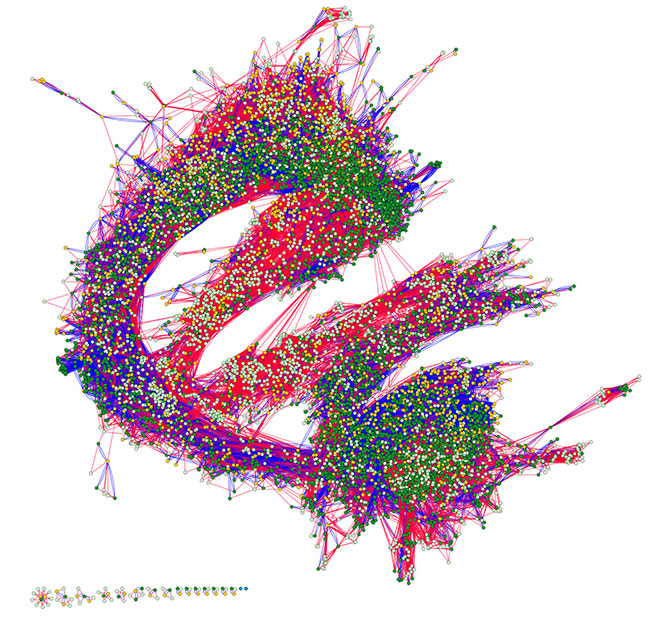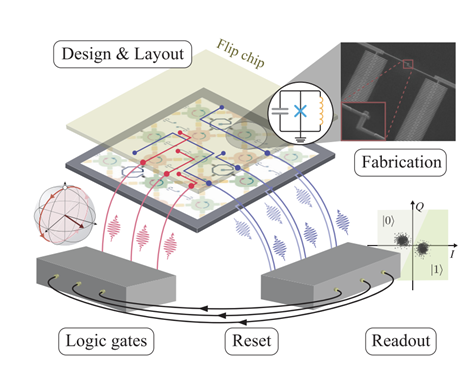A Novel Method for Comparing Plant Genes
Researchers develop a method of identifying gene expression patterns in drought-resistant plants.

The Science
During normal photosynthesis, plants open their stomata (microscopic pores in the plant epidermis that permit the flow of gases and water vapor) during the day to take in carbon dioxide needed for carbohydrate production. But a small percentage of plants open their stomata to capture carbon dioxide only at night, thereby conserving water. This form of photosynthesis is called crassulacean acid metabolism (CAM). In this study, scientists created a new method to analyze this conservation by comparing genes of CAM plants with each other and with the genes of plants possessing a more common type of photosynthesis called C3. They found a collection of gene “triangles”—and a new method of studying time-related patterns of gene expression across species.
The Impact
The study provides insights into CAM mechanisms. The research will serve scientists across the biological and chemical science domains who have a long-term goal of engineering CAM into bioenergy and food crops, so they will be more tolerant to drought. The team said this newly developed Fisher triangle enrichment method could be applied to study any mechanism across species. The team believes the method may even have potential applications in human clinical genomics studies, such as those related to diseased versus nondiseased populations.
Summary
The water-saving characteristics developed by CAM plants allow for survival in arid climates. Plant species such as orchid, pineapple, and Kalanchoë use CAM photosynthesis to conserve water by keeping their stomata, or pores, shut during the day and open at night to collect carbon dioxide. In studying the building blocks of CAM, scientists open doors to bioengineering the metabolic processes of water-intensive crops such as rice, wheat, and soybeans to accelerate their adaptation to more arid environments.
In this study, a team developed a new method of comparing genes of CAM plants with genes of C3 plants that will provide scientists with a detailed understanding of the mechanisms behind CAM. The team compared plant data that described the abundance of expressed (activated) genes throughout the day based on sequenced RNA molecules in each plant’s tissue. The team searched for gene families in which an Arabidopsis gene (1) had an opposite expression pattern to genes of pineapple and Kalanchoë, both CAM plants, and (2) shared the same expression patterns with pineapple and Kalanchoë. Arabidopsis belongs to the cress family of plants—it was the first plant to have its genome sequenced and is the domain standard for studying gene expression in plants. The scientists ended up with a collection of gene triangles that detailed the similarities among CAM genes and a method of comparing genes of CAM versus non-CAM plants. The team’s results also enabled scientists at Oak Ridge National Laboratory to identify 54 genes that showed convergent regulatory patterns in CAM species, providing insight into CAM mechanisms that may prove useful for bioengineering plants that use water more efficiently.
Contact
Daniel Jacobson
Oak Ridge National Laboratory
jacobsonda@ornl.gov
Xiaohan Yang
Oak Ridge National Laboratory
yangx@ornl.gov
Funding
This research was supported by the Department of Energy (DOE), Office of Science, Office of Biological and Environmental Research Genomic Science Program; the United Kingdom Biotechnology and Biological Sciences Research Council; the Laboratory Directed Research and Development Program of Oak Ridge National Laboratory (ORNL); and the DOE Joint Genome Institute. This research used resources of the Oak Ridge Leadership Computing Facility and the Compute and Data Environment for Science at ORNL.
Publications
X. Yang, R. Hu, H. Yin, et al., “The Kalanchoë genome provides insights into convergent evolution and building blocks of crassulacean acid metabolism.” Nature Communications 8, 1899 (2017). [DOI: 10.1038/s41467-017-01491-7]
Highlight Categories
Performer: University , DOE Laboratory , SC User Facilities , ASCR User Facilities , OLCF , BER User Facilities , JGI
Additional: Collaborations , International Collaboration



